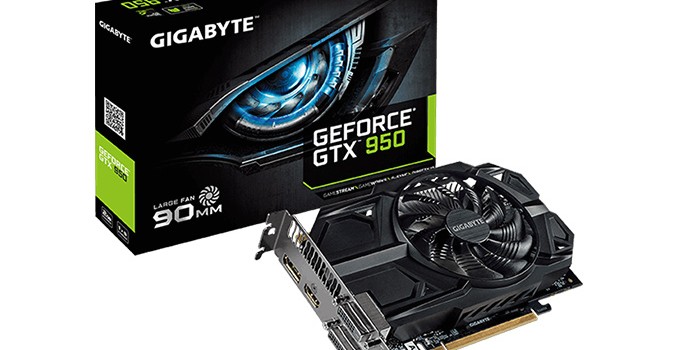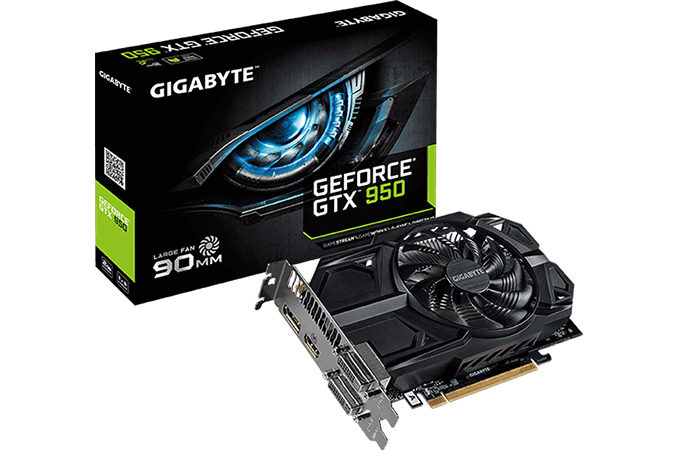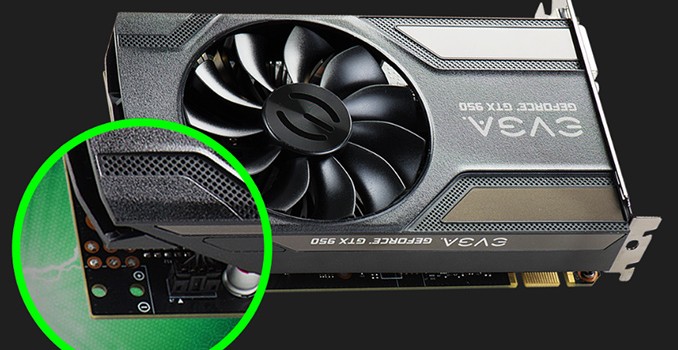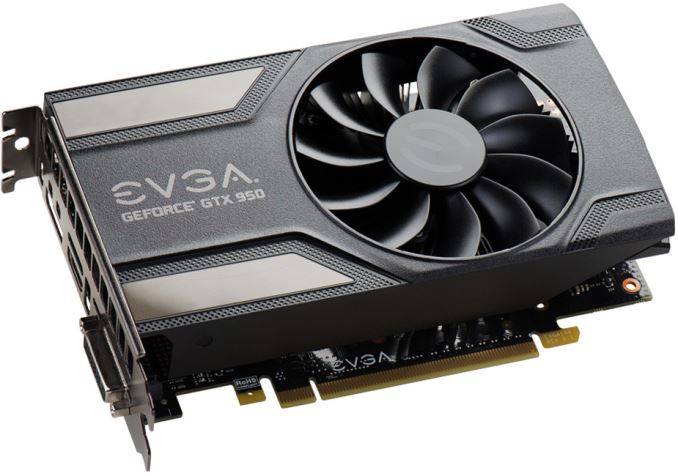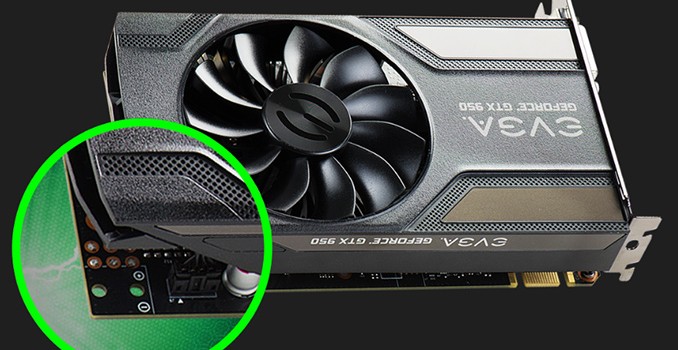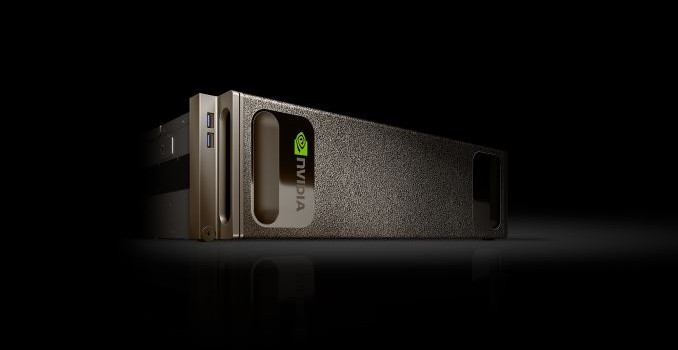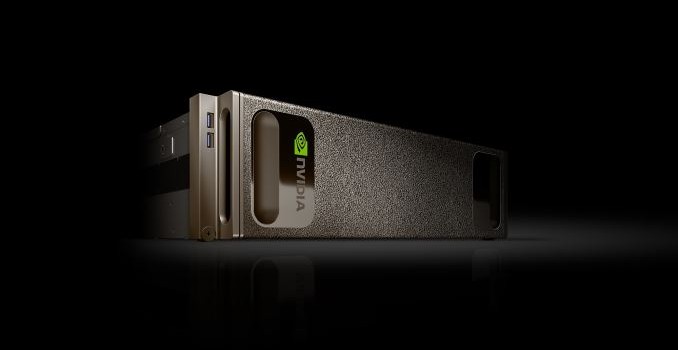GIGABYTE Adds 75W GeForce GTX 950 to Lineup
GIGABYTE has quietly added a low-power GeForce GTX 950 video card to its lineup. The product does not require auxiliary PCIe power connector and can be powered entirely by a PCIe x16 slot. Low-power graphics cards featuring the GM206 graphics chip were released by multiple manufacturers recently, GIGABYTE’s board will compete against similar products by three other makers.
The GIGABYTE GV-N950D5-2GD graphics card is based on the GeForce GTX 950 GPU in default configuration (768 stream processors, 48 texture units, 32 ROPs, 128-bit GDDR5 memory interface), but does not require external power, unlike Nvidia’s reference design of the product. Power consumption of the GV-N950D5-2GD does not exceed 75 W, which is why it can be powered by the PCIe x16 slot. Due to reduced power consumption, the new graphics card from GIGABYTE does not feature significant factory-overclocking, it comes with GPU frequencies of 1051/1228 MHz (base/boost) and thus offers performance close to that of Nvidia’s reference card.
The board is equipped with 2 GB of GDDR5 memory, two DVI connectors, one HDMI 2.0 port and one DisplayPort output. The product uses a rather simplistic dual-slot cooling system with one fan, which should be sufficient given low-power nature of the device. In a bid to ensure long lifespan of the product, GIGABYTE uses high-quality components, such as solid-state inductors and capacitors, to build the GV-N950D5-2GD.
GIGABYTE added its low-power GV-N950D5-2GD graphics card to its lineup after ASUS, EVGA and MSI quietly introduced their GeForce GTX 950-based products with 75 W power consumption that do not require auxiliary six-pin PCIe power connectors. Such adapters can be used to upgrade inexpensive PCs that do not have an extra power connector inside, or to build low-power gaming or HTPC systems. Since the GM206 GPU is still the only GPU on the market that supports hardware-accelerated decoding and encoding of H.265 (HEVC) video, as well as HDCP 2.2 content protection over HDMI 2.0 (which is required for Ultra HD Blu-ray playback), those who build modern HTPCs, do not have a lot of choice.
| NVIDIA GeForce GTX 950 Graphics Cards Specification Comparison | ||||||||
| GIGABYTE GTX 950 |
EVGA GTX 950 | EVGA GTX 950 | MSI GTX 950 |
ASUS GTX 950 |
Ref | |||
| Product Name | GV-N950D5- 2GD |
02G-P4- 0954 |
02G-P5-258 | 2GD5 OCV2 | GTX950-2G | – | ||
| CUDA Cores | 768 | |||||||
| Texture Units | 48 | |||||||
| ROPs | 32 | |||||||
| Core Clock | 1051 MHz |
1025 MHz |
1076 MHz |
1076 MHz |
1026 MHz |
1024 MHz |
||
| Boost Clock | 1228 MHz |
1190 MHz |
1253 MHz |
1253 MHz |
1190 MHz |
1188 MHz |
||
| Memory Clock | 6.6 Gbps GDDR5 |
|||||||
| Memory Bus Width | 128-bit | |||||||
| VRAM | 2 GB | |||||||
| TDP | 75 W | 90 W | ||||||
| Outputs | DVI-D DVI-I DP 1.2 HDMI 2.0 |
DVI-D DVI-I DP 1.2 HDMI 2.0 |
DVI-D DVI-I DP 1.2 HDMI 2.0 |
DVI-I DisplayPort 1.2 HDMI 2.0 |
||||
| Architecture | Maxwell 2 | |||||||
| GPU | GM206 | |||||||
| Transistor Count | 2.94 B | |||||||
| Manufacturing Process | TSMC 28nm | |||||||
| Launch Date | Apr ’16 | Mar ’16 | Aug ’15 | |||||
| Launch Price | unknown | $159 | ||||||
With GIGABYTE’s addition of a GM206-251-based graphics board to its product family, low-power GeForce GTX 950 is now available from virtually all well-known suppliers of video cards. Pricing of GIGABYTE’s GV-N950D5-2GD video card is unknown, but GeForce GTX 950-based adapters are generally inexpensive.

